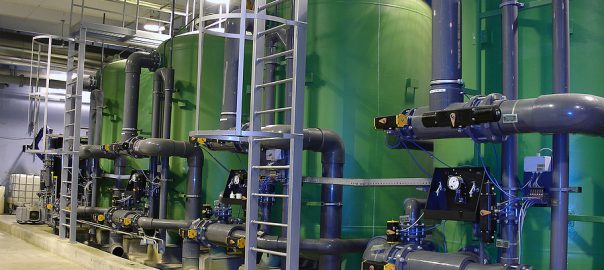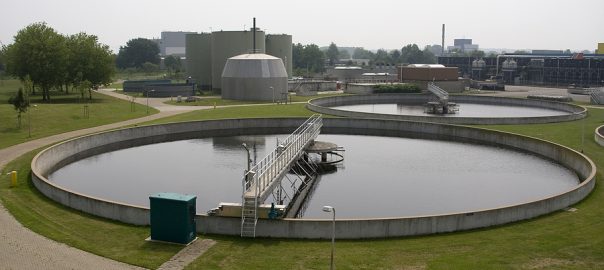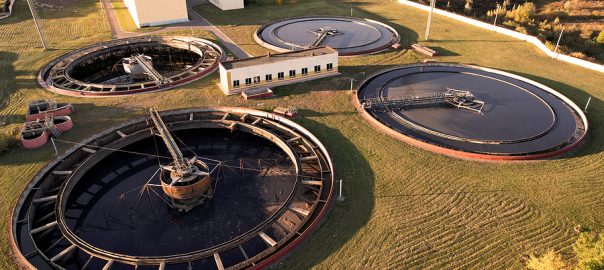
U.S. wastewater treatments function at approximately 81% of their capacity. About 15% have reached or exceeded capacity, and that’s a problem. Unusual weather patterns wreak havoc on wastewater treatment plants, leading to raw sewage ending up in rivers, lakes, ponds, and the ocean. Aging wastewater treatment facilities need upgrading. It’s not something to put off until something goes wrong.
In 2019. The Infrastructure Report Card found that despite expenditures of more than $3 billion, there was a gap of more than $80 billion needed to fix all of the problems in wastewater treatment plants across the country. Typically, a wastewater treatment plant is designed to last about 40 to 50 years.
But, weather extremes have made it clear that Mother Nature isn’t kidding around. There were flooding rains and feet of snow in California that led to landslides and floods in areas that hadn’t experienced much rain in years, followed by a “bomb cyclone.”
Areas of Vermont that weren’t even in flood zones saw flood waters rise by many feet, leading to the flooding of several wastewater treatment plants and damage to an under-river sewer pipe, leading to a lot of raw sewage leaking into Lake Champlain. By the end of September, Montpelier’s wastewater treatment plant was still dealing with the aftermath of clogs from flood debris.
Many other states including Maine, Massachusetts, and Pennsylvania also experienced severe flooding. Most recently, seven inches of rain devastated New York City and experts realized that many of the city’s stormwater systems were not equipped for the amount of rain that fell.
A combination of heavy rain and equipment failure led to the release of extra rain and a little raw sewage into a ditch at an Illinois wastewater treatment plant. While parts fail, a bigger problem for this plant is that the parts that are needed are not available. It’s expected that the back-ordered parts will take a couple of weeks to arrive.
When your wastewater treatment plant needs upgrades, you have to take action. Even if it seems okay, you have to consider changing weather patterns and be prepared. But, you also need to carefully balance the costs with what the people in your area can afford. When need to modernize, what are the best steps to ensure everyone gets what they need?
Build Your Wastewater Treatment Facility’s Upgrades Plan
You have to start with a plan. In this, you’re going to start by looking at the budget and your needs. What within the plant is most in need of upgrading? To decide this, look at the equipment, pumps, motors, etc. that break down regularly. The more time your employees spend on repairs and maintenance, the more costly it becomes. That equipment is the first to upgrade.
Is your community growing? Now is the time to plan for future growth. If you upgrade now with plenty of room for growth, you’re not going to ask for additional equipment 10 years from now. Plan for the community’s future needs and avoid reaching capacity before the equipment is fully depreciated.
Once you have a list of what needs upgrading, figure out the cost to make all of the replacements. That gives you a budget, but now you need to look at what the taxpayers in your district can afford. If you’re looking at water bills going up 5%, that may get more support than asking your region’s taxpayers to agree to a 20% increase. You need to remember that they’re also dealing with increasing groceries, fuel costs, heating bills, electricity rates, etc.
Ultimately, voters approve the upgrades you need. You need to provide proof that the chances are needed. You also have stakeholders to work with. They need to support your plans to modernize your wastewater treatment facility. If they’re not on board with the changes, it’s going to become difficult to complete the different steps in your plan.
Provide a solid plan of what’s needed, why it is important, and how much it’s going to increase their bills. A slideshow with the amount of facility downtime that’s happening and how many hours of overtime are going into the emergency repairs shows how much of a problem older equipment is. Point out the grants or loans you’ve qualified for to show how much you’ve saved in the long run through government funding for the necessary improvements.
Look Into Energy-Efficient Measures
While you’re modernizing your plan, take every possible step to improve energy efficiency within your plant. LED light fixtures are a small, important change. Motion-activated lights save money by turning off when someone isn’t in a specific area of the plant.
Alternative energy options are another upgrade that saves a lot of money. Solar panels cost extra, but if their additional cost will be paid off within five years due to the electricity savings, it’s worth it. Solar panels typically have a lifespan of upwards of 30 years, so you’ll have 25 years or so where they’re sheer profit.
Another area to consider is the capture of methane your plant produces. You can turn that into fuel to power or heat your plant. If you use methane for heat in the winter and cooling all summer, it’s a money-saving change.
Newer pumps and motors require less energy and adjust their output to match flow rates. Plus, you can have control panels that offer wireless connectivity to enable operators to check systems from a remote location. Components that are sealed and don’t require constant lubrication work better and require less downtime for maintenance.
Is It Time to Convert Integrated Sewer and Stormwater Systems?
Around 860 facilities in the U.S. process both wastewater and stormwater from heavy rains or snowmelt. It’s easy for this type of system to flood after a storm or rapid snowmelt and cause the release of raw sewage.
If it’s time to update your system and you have a combined sewer network, it’s time to look into separating them. The Sewer Overflow and Stormwater Reuse Municipal Grant Program was established on August 10, 2023, and helps provide around $50 million in grants for districts that are upgrading combined sewer overflows, stormwater management projects, or sanitary sewer overflows.
Always Work With a Qualified Engineer
Whether you’re planning to separate your systems or need to make upgrades to your community’s wastewater treatment facility, work with a qualified engineer. You need an expert to help make sure the changes you make are going to improve output and efficiency while also being cost-effective at the same time.
Another reason to work with a wastewater treatment plant specialist is that your system will not be fully functional when you’re making upgrades. This lower capacity may impact people in your municipality. They need to be reassured that any disruptions are going to be minimal. A wastewater treatment specialist ensures the upgrades are handled quickly and correctly.
Lakeside Equipment is the expert you need on your side. Lakeside has been in water purification for nearly 100 years and knows the best ways to modernize your plant without exceeding your maximum budget. Give us a call or reach us online to get the help you need in wastewater treatment plant design, planning, and improvements.






